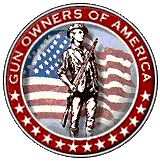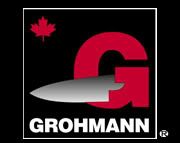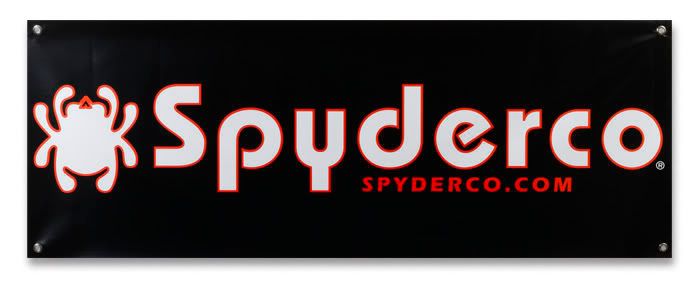|
Saturday, April 19, 2014
Shell Holder Cross Reference
I often have need for this.
Friday, April 18, 2014
Chokes
It is spring gobbler season. Consequently, we've had a lot of people looking for turkey chokes and have been sorting through the odd assortment of used and mis-packaged chokes every shop seems to have. I've found this chart useful.
| 12 Gauge | 20 Gauge | 28 Gauge | .410" Bore | American | English | Browning | Italian | Perazzi | Percentage | |||||||||
| Constriction | Constriction | Constriction | Constriction | Designation | Designation | Codes | Codes | Codes | Pattern | |||||||||
| .000" -.001" | .000" - .001" | .000" | .000" | cyl | true cylinder | *** | C**** | 0 | 40% | |||||||||
| .002" - .006" | .002" - .004" | .001" - .004" | .001" - .002" | skeet | impr cylinder | **$ | S | 1 | 45% | |||||||||
| .007" -.013" | .005" - .011" | .005" - .007" | .003" - .006" | imp cyl | quarter | **- | **** | 3 | 55% | |||||||||
| .014" -.023" | .012" - .019" | .008" - .014" | .007 - .012" | mod | half | ** | *** | 4 | 60% | |||||||||
| .024" -.031" | .020" - .026" | .015" - .020" | .013" - .017 " | imp mod | three quarter | *- | ** | 6 | 65% | |||||||||
| .032" -.040" | .027" - .033" | .021" - .027" | .018" - .021" | full | full | * | * | 9 | 70% | |||||||||
| .040"+ | .034"+ | .028"+ | .022"+ | ex. full | 10 | 75% |
Thursday, April 17, 2014
A New Game
Well, I've been suckered into shooting in our club's .22 LR benchrest matches. Of course I don't (didn't) have a suitable rifle. Most shoot an Anschutz but a couple of fellows use BSA tilting blocks. I put it off but the combined pressure of the wife wanting me to make the club membership "worth the money" by shooting more and various and sundry urging me to shoot came to a head yesterday when I stopped by the shop to work out some scheduling details (which have yet to be worked out). The boss wasn't there but my co-worker and good friend Wayne pointed out that a Winchester 52C HB target had come in on consignment. I didn't think that I could afford to pay what it was worth but put some money down to make sure it didn't get out the door with somebody else.
Made in 1955, with globe and aperture sights as well as scope blocks it is set up as a small bore rifle. However, these have a big flat forearm which should work well on the rest. Then I got a little research done and was thinking I'd have to D&T for mounts suitable for a more modern scope and also discovered that it was more than I'd initially thought.
So, today, I went in to get my money and put it back on the market. The boss man was there and I fell over when he said he'd let me have it for what the consignor wanted, $825. Now I will have to find an adapter bracket for the Lyman/Unertl block(s) or a mount that uses the rear sight mounting holes. It does need some loving cleaning on the exterior. I will also have to find some better ammo.
Links:
- Dewey Greiner's Classic Unertl Scopes
- Evolution Gun Works
- Gary Fellers Sights & Scopes
- Parson Scope Service
Made in 1955, with globe and aperture sights as well as scope blocks it is set up as a small bore rifle. However, these have a big flat forearm which should work well on the rest. Then I got a little research done and was thinking I'd have to D&T for mounts suitable for a more modern scope and also discovered that it was more than I'd initially thought.
So, today, I went in to get my money and put it back on the market. The boss man was there and I fell over when he said he'd let me have it for what the consignor wanted, $825. Now I will have to find an adapter bracket for the Lyman/Unertl block(s) or a mount that uses the rear sight mounting holes. It does need some loving cleaning on the exterior. I will also have to find some better ammo.
Links:
- Dewey Greiner's Classic Unertl Scopes
- Evolution Gun Works
- Gary Fellers Sights & Scopes
- Parson Scope Service
Thursday, April 03, 2014
Webley MK IV .38/200 (aka .380 Revolver or .38 S&W)
 |
| Webley MK IV .38 opened for loading |
The main reason for the desired change from .455-inch to .380-inch was that handgun marksmanship and handling are training intensive skills. This fact was painfully emphasized early in the First World War after the long serving professional British Army had been decimated in the 1914 and 1915 offensives and replaced by conscripts without shooting experience. The conscript force did not have sufficient time to be competently familiarized and trained with the big .455 MK VI. It was decided that a lighter pistol of smaller caliber would have been more suitable. Webley & Scott submitted a sample .380 revolver to the War Office on July 19th, 1921, along with 200 rounds of modified .38 Smith & Wesson (S&W) ammunition. The revolver was a modified Webley MK III hinged frame, self-ejecting pocket model. New features included a detachable striker for the hammer and a removable sideplate cover. The ammunition was modified to use lead bullets of over 200 grains in weight.
Based on the War Office's evaluation, a new MK IV model was submitted in January, 1922, and received favorable reports from the Army's Small Arms School. The revolver was generally liked for its lighter weight and shorter barrel and was considered to be a better service weapon than the .455 MK VI Webley, provided that a projectile of sufficient stopping power could be provided.
 |
| Schematic for MK IV |
Meanwhile, all was not well at Webley & Scott. The government Small Arms Committee, on August 30th, 1922, directed RSAF Enfield to arrange the manufacture of the new revolver. This they did, making no changes to the Webley MK IV worthy of note, except eliminating certain manufacturing features to speed production, and a subtle reshaping of the grip. Webley & Scott was understandably upset by this turn of events - when they were shown the engineering drawings of the RSAF Enfield revolver, no design acknowledgment was given to Webley & Scott!
Despite this, two .380 Webley & Scott MK IV revolvers were sent to the Small Arms School in March 1924, and underwent trials from September 4th to 11th, 1924. These guns, one with a 6 inch barrel and one with a 5 inch barrel, achieved 1 inch groups at 10 yards and 2 inch groups at 20 yards.
By 1927, Webley & Scott became aware that their design for the MK IV had been pirated by the government as the "Pistol, Revolver, No. 2 Mk. 1," and that there was no intention by RSAF Enfield to have the new revolver manufactured by Webley & Scott. Webley & Scott sued the government for their development costs, but were denied. They were eventually awarded about 50% of their claim by the Royal Commission on Awards to Inventors, but the War Office took umbrage to the claim, and concluded the relationship which had provided Britain with her service pistols for so long.
 |
| Manual available from Cornell Publications |
Use of the commercial Webley MK IV by many police forces around the globe, notably those in Britain, Israel, Canada, and Australia, continued as late as the 1970's, and in some places continues today, a fine testament to this outstanding revolver.
While British military .380 ammunition is available, the Webley MK IV shoots well with US commercial .38 S&W ammunition. Although the point of impact vs. point of aim may vary due to the lighter bullets used in the US commercial ammunition (146 grains as opposed to 178 or 200), group sizes can be quite satisfying.
This particular revolver is marked "S P F 5131" on the top of the "knuckle" or grip frame hump, i.e. it was issued to the Singapore Police Force. 5131 is the agency's "rack" number. As received it had apparently been converted to double action only. Not all SPF guns have been so altered. It is an earlier import though and lacks the cross-bolt safety or importer markings made mandatory on later imported lots.
I was certain I could convert it back to SA/DA from DA only. I was pretty certain that this would only require a new hammer with the sear notch. I think it is safe to say that I assumed too much.
I ordered a replacement hammer from Apex Gun Parts and it came right away. Got gun and hammer the same day but a couple of days passed before I was able to mess with it. This is not a particularly difficult gun to work on. However...
 |
| The No. 2 Mk. I Revolver |
This gun has a hammer safety lever and two related parts (including the hammer safety lever) almost like the Enfield No. 2 MK I revolver. The hammer was modified to function with the hammer safety lever but if you take it out, i.e. omit only the safety lever, then either hammer function just fine. I decided to give it a rest and ponder the problem a bit.
So, one day some friends came by the militaria shop and I pulled out the revolver to show them how simple it was to take apart and reassemble. Using a dime to remove the cam lock screw I showed them how the gun was field stripped. I then reassembled the gun and, intending only to tighten the screw "finger" tight managed to turn the head right off. It was back to Apex Gun Parts for 2 of what they call the "cam fixing screw". It appears that I am now accumulating parts for this model gun. The cam fixing screw/cam lock screw arrived and it is a simple matter of removing the left side cylinder hinge screw and, while holding everything in place with the left hand, removing the cam lever and then using a pair of needle-nosed pliers to turn out the headless screw (the cam lever slipped right off over the headless screw), replacing the cam lever and cylinder hinge screw and then the cam fixing/cam lock screw. All back to normal now, I continued to ponder the work needed to return the single-action capability.
It seems to me that what was wrong with this gun was that there was insufficient room on the hammer for the trigger to engage the sear. Rather than stoning the sear itself, I used the stone to judiciously (I hoped) remove enough metal to give the trigger room to engage the sear without actually touching the sear. This seems to have worked. The gun has now been through 100 single-action dry fire cycles without failure.
This gun is a bit peculiar to the type. While the Enfield has a hammer block (which one can see in the above illustration/schematic) which is a flat metal bar operating in a slot machined to the right interior of the revolver frame from the area of the trigger to the level of the barrel catch, the Webley revolvers made to fill wartime exigencies did not have this nor did many of the revolvers made after the war for issue to various police agencies. This one does. Interestingly, the hammer was clearly modified after production without refinishing although the frame was clearly produced for this modification. To provide a "stud" on which the linkage connecting the trigger to the block could rotate, a screw was added to the right side of the pistol which is unthreaded inside the pistol to provide that "stud" or pin. No effort was made to inset the screw head in the revolver frame and it stands strong and proud. While it is a bit of an eyesore it doesn't interfere with the hand or fingers in firing. The hammer block itself has the appearance of an allen wrench flattened on the short leg with a hole through that flattened portion by which it is attached to the linkage at the trigger. The hammer body holds that part of it against its connecting stud on the link. For what it is worth, the gun will function without this part just as well as with it. It does complicate reassembly of the hammer and trigger but all this can be done without a third hand or vise.
At the gun shop, while on the floor stocking ammo, a fellow walked up to me with the short barrel small grip version of the gun. This has the cross-bolt safety, near the knuckle of the frame. Because of my experience with this gun I was able to educate him on his gun and on the one fault it possessed. The cylinder stop was worn. Webley uses a stop separate from the bolt that locks the cylinder in place during firing to keep the cylinder from rotating when not actually firing the revolver. Thus, his cylinder could easily be rotated when the hammer was forward although it did advance the cylinder and lock up properly when cocked. I think this could be fixed by replacing the part.
I seem to remember that his gun was a .38 (the .38 S&W) but all that I have seen in my research are .32s (for the .32 S&W Long). The Brits don't seem to have worried much about terminal ballistics in their choice of revolver chamberings. However, to give credit where credit is due, these cartridges are at least as good as the .32 ACP, .380 ACP/9mm Kurz or 9x18 Makarov cartridges with which these guns are contemporary in military usage.
Now I can begin acquiring and loading ammunition for this revolver. One of the most intriguing loads is the old Super Police 200 gr. bulleted load.
This is not a barn burner so far as velocity is concerned but it approximates the British .38/200 load that was the rationale behind adoption of the No. 2 MK I revolver (and the Webley war expedient purchases).
I really wanted to duplicate the load but given the current state of affairs I wanted to use a powder which could be stretched to load several hundred cases and would be relatively easy to replace later. Bullseye does the trick and 2.0 grains under a 200 gr. lead bullet from Matthews seems to duplicate the British load quite well. It does seem to hit with more authority than the standard U.S. load using the 145 grain bullet.
Wednesday, April 02, 2014
Notes from the gun shop...
Yesterday was the first business day in the new shop. Very busy even with 5 people working the floor and register. Lots of visitors/shoppers.
Subscribe to:
Comments (Atom)























